Unilock permeable pavers go with the flow of nature by letting storm water in and keeping heat out.
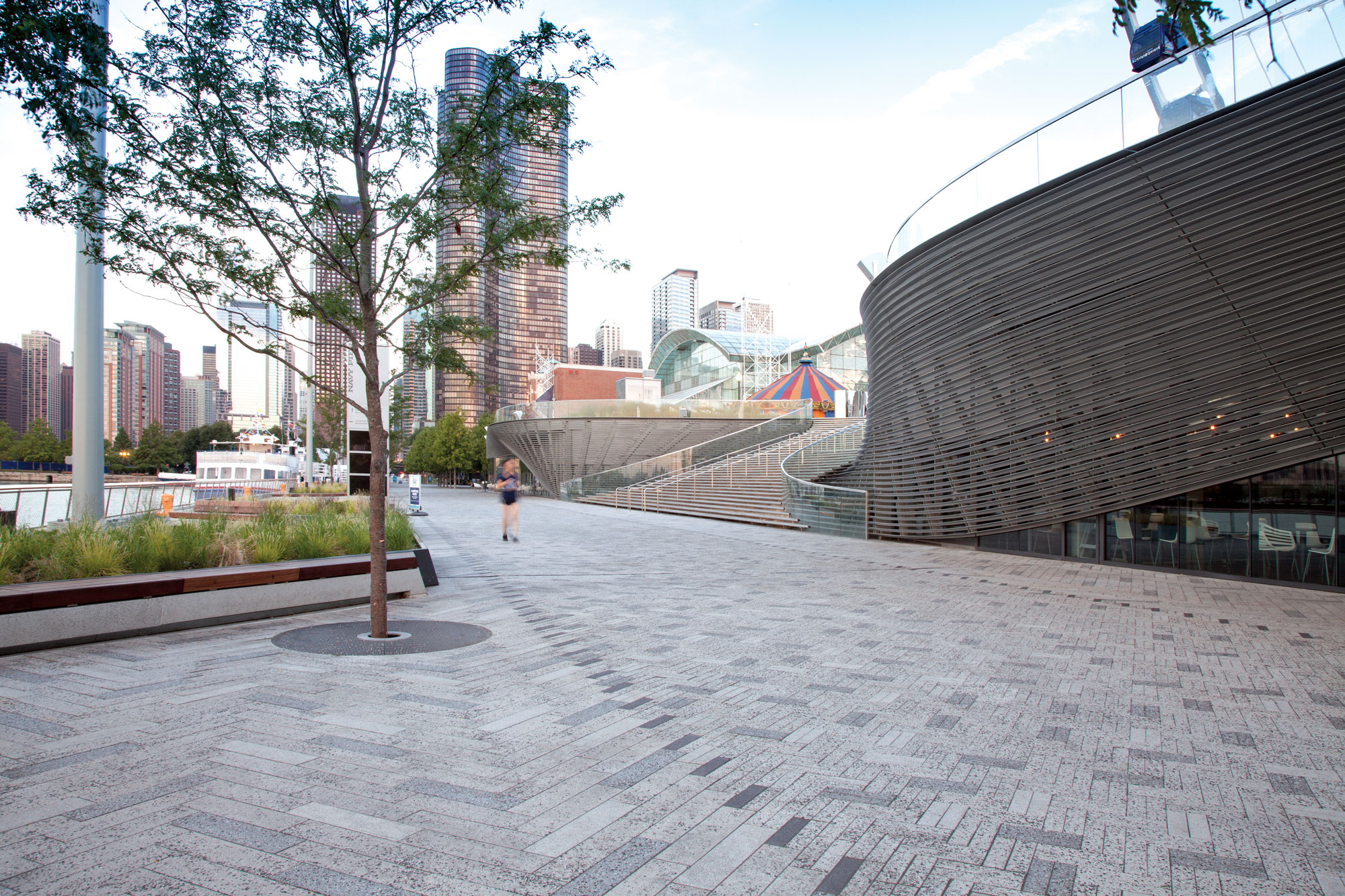
When it was time for Chicago’s big redevelopment project at Navy Pier, the experts turned to Unilock. [Photo: Courtesy of Unilock]
Every time it rains, Elaine Willis smiles. As the director of commercial strategy for Unilock, North America’s premier manufacturer of concrete pavers, she takes satisfaction knowing she’s helping to make the planet a little more permeable each day.
The company was a pioneer in designing paved surfaces that allow storm water to infiltrate back into the subgrade as it falls, unlike impervious concrete and asphalt surfaces that channel runoff into rivers and streams, creating a host of environmental issues and contributing to downstream flooding.
It happens to be pouring when I reach Willis at the Toronto headquarters for Unilock. Again. For several years in a row, the city has seen above average rainfall, not unlike many other regions of the world in the age of climate change. Huge tracts of waterfront property on Lake Ontario have been submerged for over a month. “If we had more permeable surfaces we could greatly reduce some of the issues we’re having with storm water,” Willis says. “A lot of people don’t realize that permeable pavers don’t cost any more than traditional pavers.” She adds that the only real difference in a permeable paver, versus a traditional paver, is a larger joint size, which allows water to infiltrate without sacrificing the strength of the pavement.
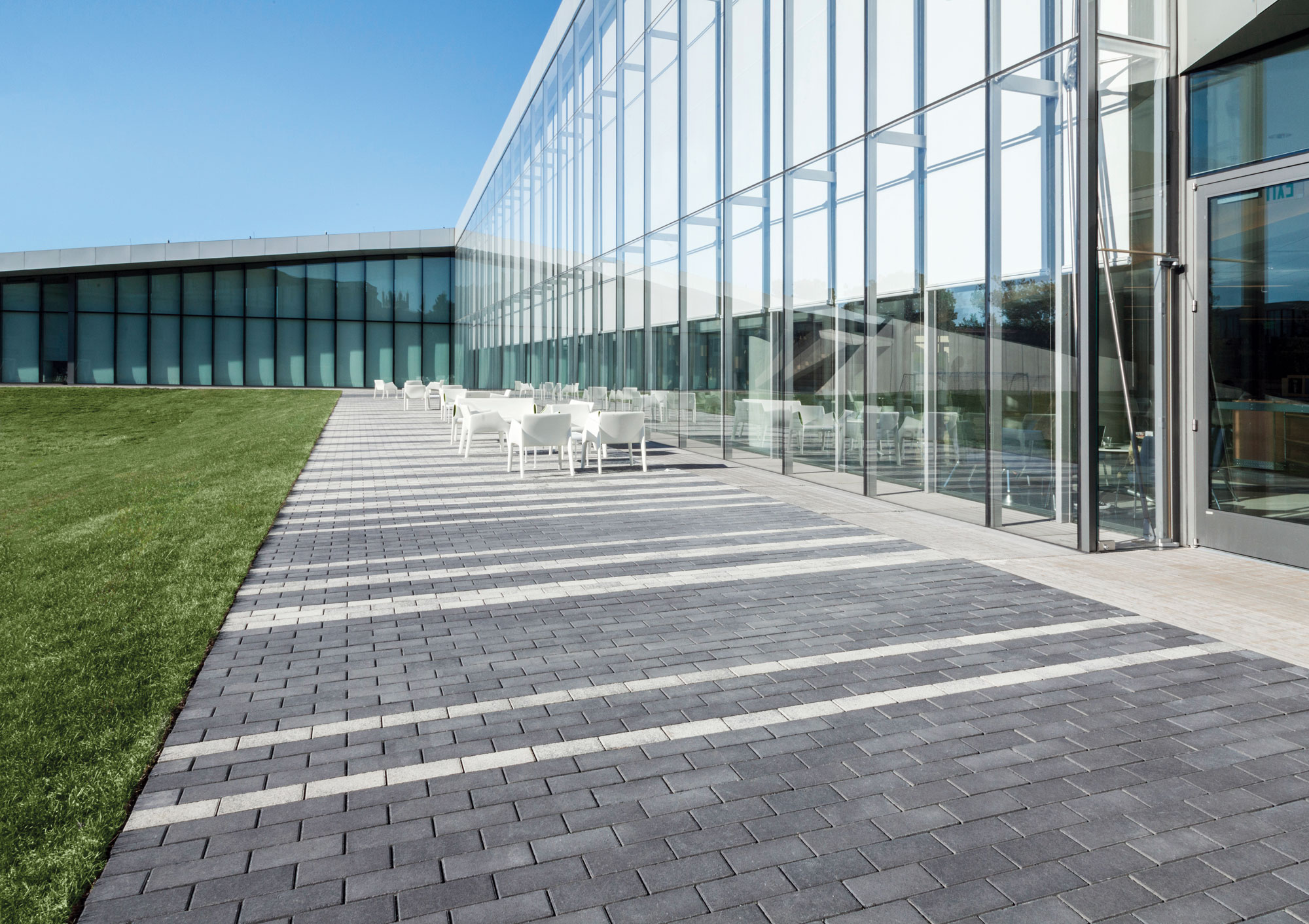
[Photo: Courtesy of Unilock]
The Possibilities of Permeable
Long used for patios and plazas, interlocking pavers are increasingly employed in parking lots, roadways, and other large-scale commercial applications. Installation is a bit more costly than asphalt or concrete, but they last longer and have lower maintenance costs, helping to recoup the investment over time. A study of a large permeable paver parking lot at the Morton Arboretum near Chicago, which sees 850,000 visitors annually, found that the $80 per square yard maintenance costs on asphalt were nearly double what it costs to maintain the pavers, leading to a break-even point of 23 years for the investment, which is less than half the lifespan of the pavers. The large permeable surface factored heavily in achieving SITES certification for the project.
Porous pavement, which refers to pouring asphalt in a way that leaves the surface full of holes when it hardens (like igneous rock), is also an option for infiltrating storm water runoff. However, these products have a tendency to quickly become clogged and cannot be readily cleaned out, defeating the purpose. Should permeable pavers become clogged and begin to lose their perviousness, the problem is easy to fix, Willis says. “You can often just vacuum out the clogged joint material and that takes care of it. At worst, you may have to pull up some of the pavers and replace the aggregate, but you are able to reuse the same paving stones. With pervious asphalt, you have to replace it entirely if it becomes clogged.”
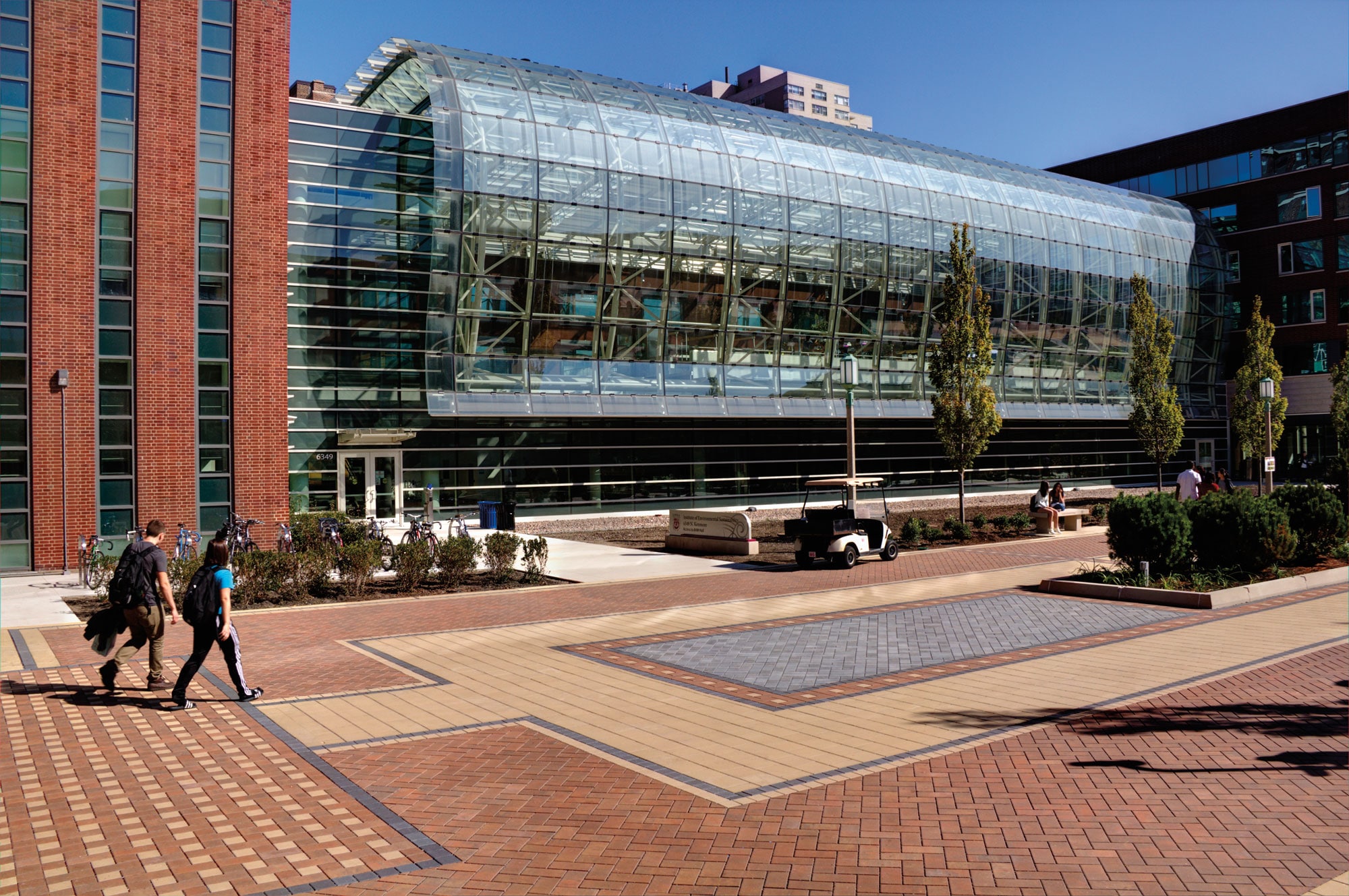
Unilock’s permeable pavers have been used as solutions at major universities, libraries, and even the UN headquarters in New York. [Photo: Courtesy of Unilock]
Of course when it comes to aesthetics, asphalt and concrete don’t hold a candle to the beauty and grace of pavers. Brad McCauley, a managing principal at the Chicago-based landscape architecture firm Site Design Group, has been specifying Unilock permeable pavers on his projects for more than a decade. The firm has more than 100 LEED-certified projects under its belt, and he says almost all of those have a permeable paver component, including the Chinatown Branch of the Chicago Public Library, which won the Library Building Award from the American Institute of Architects and the American Library Association in 2016.
“Rather than looking at paving as just a piece of infrastructure, why not put in something that is both more functional, and beautiful, than ordinary paving?” McCauley says. “In the early days of permeable pavers, they were very utilitarian, not something that would complement a landscape architect’s design. But Unilock has been ahead of the game in pushing paver design to align with what landscape architects are doing today. We’ve specified their permeable pavers more than any other.”
Chicago, like most large cities these days, requires on-site storm water capture as part of its building code. McCauley says there are a variety of ways to meet such requirements, though permeable pavers are often the most cost-effective approach for large paved surfaces. Many municipalities offer rebates and other incentives for permeable surfaces, making eco-friendly pavers an easy choice.
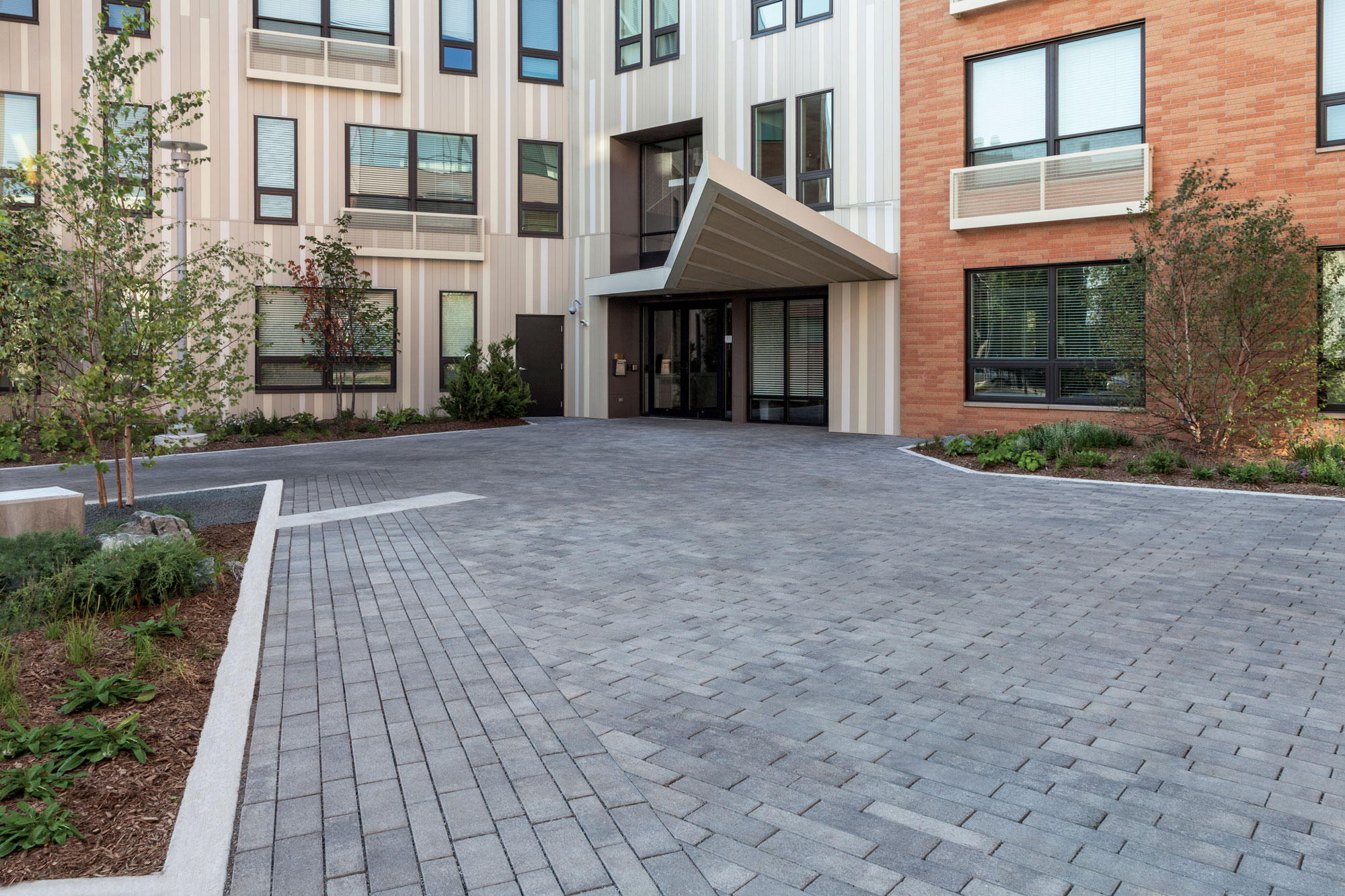
[Photo: Courtesy of Unilock]
The Sustainable Side
Plus, there are other environmental benefits to be had. By choosing light-colored pavers, the heat absorption of the surface is vastly reduced, helping designers meet LEED’s solar reflectance index (SRI) requirements and diminishing the urban heat island effect. Unilock also offers custom manufacturing for large installations, which enables locally sourced waste products to be recycled as a part of the paver mix—ingredients known as supplementary cementitious materials. At Chicago’s Navy Pier redevelopment, a SITES-certified project designed by James Corner Field Operations, Unilock used copper slag for 30% of the concrete paver mix. And when the United Nations headquarters in New York was renovated recently, the window glass was ground up into a pozzolan and repurposed as 20% of the mix for the Unilock permeable pavers specified by the design firm di Domenico + Partners.
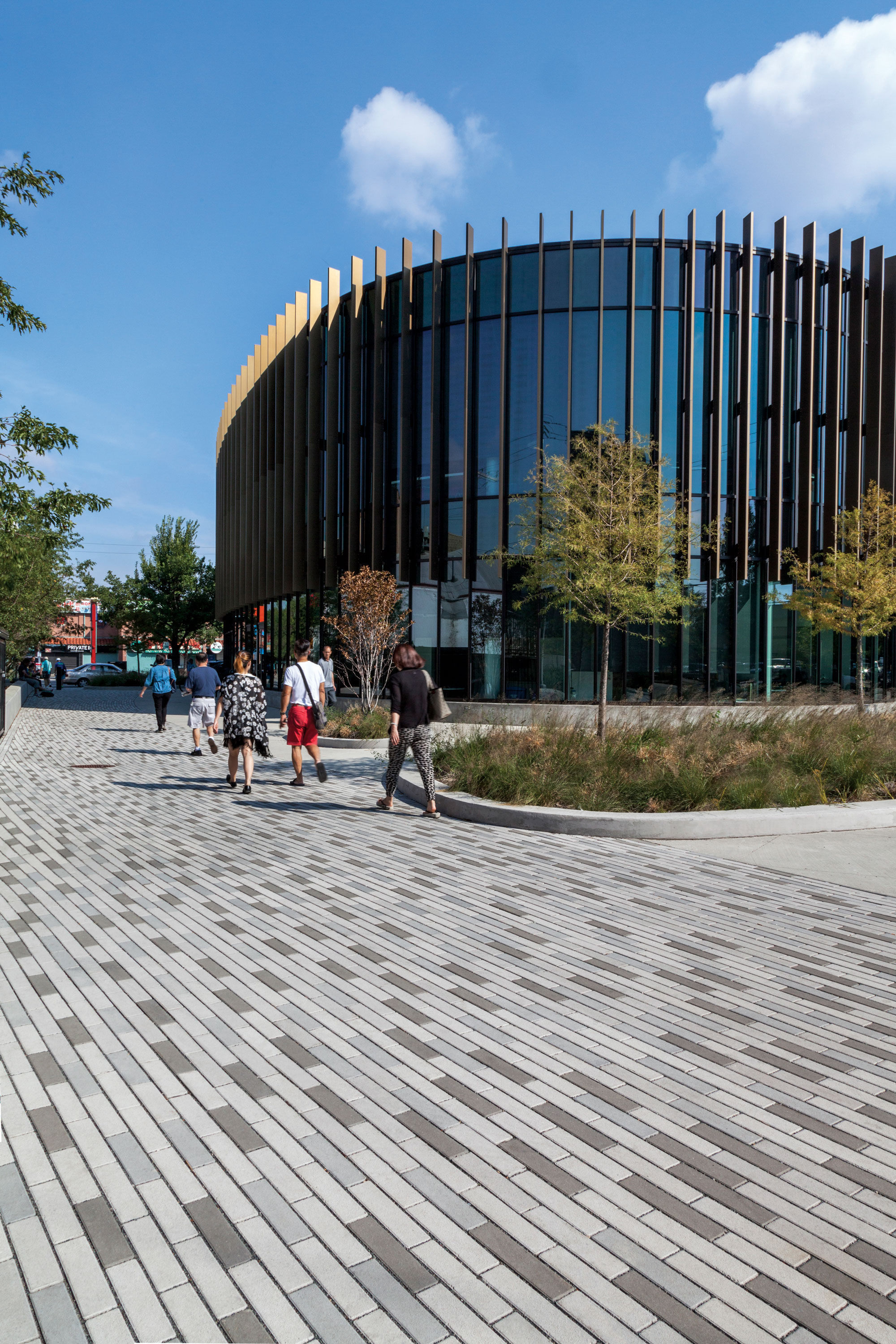
[Photo: Courtesy of Unilock]
“Recycling, reducing the heat island effect, and recharging local aquifers, all with a product that is infinitely more appealing than black asphalt—what’s not to like about that?” McCauley asks. “We’re always working to be good stewards of the land, and permeable pavers are a big help with that.”
The Glossary
Permeable Paver
- Pavers with a larger gap size that allows water to infiltrate. Unilock Eco-Promenade™ permeable pavers have a 7mm gap size.
Solar Reflectance Index (SRI)
- A measure of a surface’s ability to reflect heat from the sun. LEED standards require a minimum SRI of 29.
Supplementary Cementitious Materials (SCM)
- Waste products or natural materials used as an admixture in concrete. SCMs such as fly ash, blast furnace slag, and ground glass are options to increase the recycled content of pavers.
Learn more about Unilock and see related articles on concrete.
